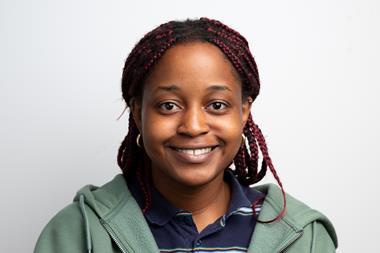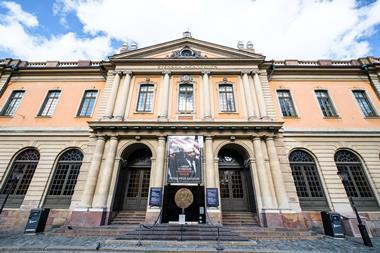How science communication on social media reignited a passion for chemistry
At the very beginning of my scientific career, when I was still learning how to properly hold a pipette and set up a Schlenk line, I connected burnout with office corporate jobs. Moreover, I was convinced that with enough motivation and endurance, burnout could not happen to me. However, after moving to a new country to begin my PhD, my research projects and academic performance became a part of my identity and I started judging my success by how many positive results and publications I produced.
About two years into my PhD, one of my main projects got stuck. I remember the moment when the feeling of guilt, shame, loneliness and impostor syndrome kicked in. I was alone in the lab late in the evening, integrating chromatograms of yet another unsuccessful set of biocatalytic reactions. Week after week of inconclusive results, teaching duties overlapping with courses, and late nights in the lab combined to make me doubt my decision to pursue a PhD. There and then, all I felt was alone. I was preparing myself to quit.
50 shades of yellow
Then, after about two months of failed experiments, I was purifying my starting material using chromatography and noticed how pretty my test tubes looked. I took my phone and snapped a picture for my family and friends, describing it as ‘50 shades of yellow’. Their reaction was the turning point for me – they laughed and asked for more details. I realised instantly how easy it was to present even complicated topics using pictures.
Those yellow chromatography tubes became my first post on my science communication Instagram account that I created later that evening. As I fell asleep that night, I was already full of regained motivation and planning my future posts. Instagram probably saved my career.
Rising above my research
Five years later, my scicomm on social media has grown into a platform summarising my research, outreach and journalistic activities. Every post, be it a cool picture from my lab, a report from a science museum I have visited or a video explaining a complicated procedure, serves multiple purposes. I can talk directly to a wide range of people interested in science, from young students to teachers, and by following me they make science a part of their lives. In posts that appear between selfies of their friends and images of people’s lunches, I can promote minorities in Stem and talk about the pressing issues of today, such as climate change, the importance of vaccination, and GMOs.
My social media activity provides me with personal benefits too. I have to thoroughly research every post I make about a complicated topic, meaning I get to learn about fields I would never have encountered as a chemist, such as astrophysics, biology and psychology. This additional reading brings me unusual ideas, excites me for science, improves my writing and relaxes me.
Community matters
But most importantly, scicomm has helped me to tackle those feelings of isolation and inadequacy. I can communicate science online regardless of whether my experiments have worked in the past week, helping to reduce impostor feelings and anxiety levels that would otherwise be triggered by inconclusive results.
Academia is an exclusive and competitive environment. The current culture of long working hours and the pressure to publish does not help; suffering is often understood as a demonstration that you are committed to your project. Many scientists end up feeling isolated and may even change career in an attempt to fight for their own well-being.
My own case wasn’t any different. Although I often felt alone in the lab, this was not true – I now know that many of the students in my research group were also suffering from loneliness and impostor syndrome; some colleagues were being treated for depression. But our mutual silence prevented us from helping each other. And not just in my own lab. Thanks to Instagram’s recommendation algorithm, I discovered fellow ‘scicommers’ who went through the same process of fighting burnout and impostor syndrome as me. We were all there for each other, happy to help and offer mentorship to anyone eager to become one of us.
Some say that time spent on social media is wasted time. I beg to differ!
I could reach out to someone at any time, early in the morning or late at night, to seek help with my failed experiment or simply talk about my insecurities. Since this contact did not happen face-to-face, I felt less vulnerable and could admit to not being perfect. I found friends and reassurance, made strong connections around the globe and started new collaborations. Ultimately, these efforts crystallised into The SciCommunity, an initiative led by a collection of science professionals dedicated to education and communicating their knowledge through social media.
In the end, science communication on Instagram saved many of my experiments, and helped me to finish my PhD with ease. Now, as I manage a dual career as a scientist and a science journalist, I still use the skills and connections I built up to help me find new people to join our team, seek new concepts to write about, and dig deeper into new analytical techniques I plan to use in the lab. Some say that time spent on social media is wasted time. I beg to differ!













No comments yet